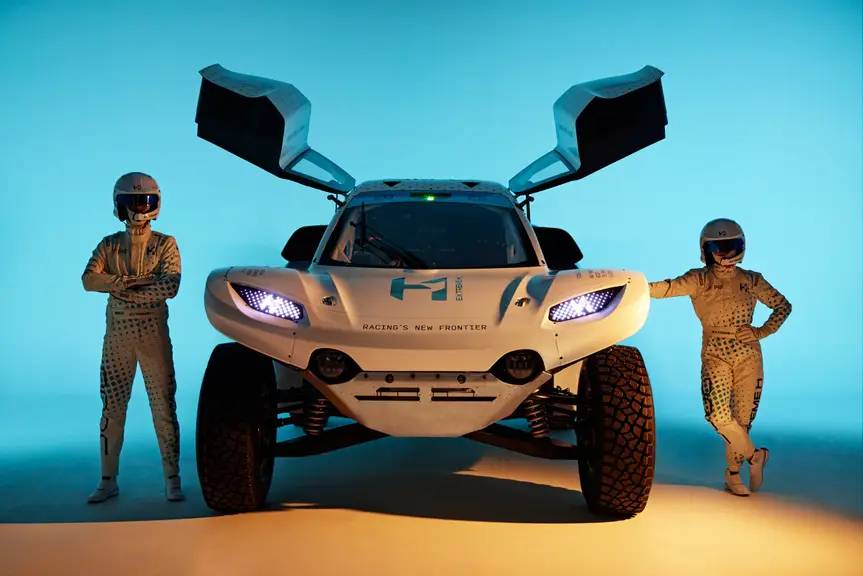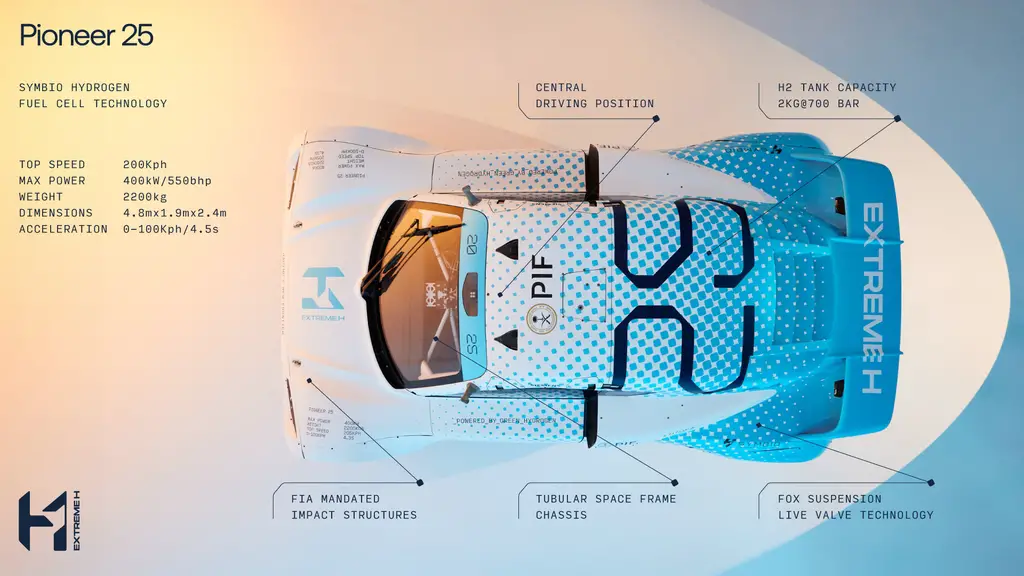
How the Hydrogen Race Car Pioneer 25 Sets New Standards
September 24, 2024Pioneer 25: A New Era in Hydrogen-Powered Motorsport
In a groundbreaking development for motorsports, the Pioneer 25 has become the first hydrogen-powered race car to pass the rigorous crash tests set by the Fédération Internationale de l’Automobile (FIA). This milestone not only signifies a leap forward in racing technology but also underscores the potential for hydrogen as a sustainable fuel alternative. The achievement is set to revolutionize the motorsport landscape with the advent of Extreme H, the first hydrogen-based racing series.
Significance of Passing FIA Crash Tests
The successful completion of the FIA crash tests by the Pioneer 25 marks a historic moment in motorsports. Hydrogen-powered vehicles have long been in the prototype stage, but none have met the stringent safety requirements for competition until now. “We shouldn’t underestimate this,” emphasized Extreme H’s technical director, Mark Grain. “It’s the first hydrogen race car that’s passed FIA muster.” This accomplishment not only highlights the car’s engineering excellence but also sets a new standard for safety in hydrogen vehicles, which have been traditionally challenged by the explosive potential of hydrogen fuel.
Technical Hydrogen Race Car Brilliance of the Pioneer 25
At the heart of the Pioneer 25 lies cutting-edge technology that enables it to achieve remarkable performance metrics. Powered by Symbio hydrogen fuel cell technology, the car boasts a top speed of 200 km/h (124 mph) and can accelerate from 0 to 60 mph in just 4.5 seconds. Its hydrogen tank, capable of holding 2kg at 700 bar, is safeguarded by innovative carbon composite crash structures. The chassis, designed with a tubular space frame, is complemented by a central driver seat surrounded by FIA-mandated impact structures, enhancing both safety and performance. “The chassis itself is much stronger,” noted Grain, “with energy-absorbing composite structures ensuring the integrity of the hydrogen systems during tests.”
Implications for Hydrogen as a Fuel
Hydrogen is increasingly being recognized as a viable alternative to conventional fuels, and the success of the Pioneer 25 provides a significant boost to this narrative. Hydrogen’s properties allow it to disperse quickly into the atmosphere, reducing the risk of explosions compared to gasoline. This characteristic makes it an attractive option for eco-friendly transportation solutions. The Pioneer 25’s achievement in passing the FIA’s crash tests demonstrates that hydrogen can indeed be harnessed safely and effectively in high-performance applications, potentially opening the door for broader adoption in other vehicle segments.
The Future of Extreme H Motorsport
Extreme H, set to launch in 2025, is poised to showcase the capabilities of hydrogen-powered vehicles on the global motorsport stage. This zero-emissions series derived from the successful Extreme E electric off-road racing series, will highlight the potential of hydrogen technology in competitive settings. The Pioneer 25 will play a pivotal role, serving as a model for other teams and manufacturers exploring hydrogen as a clean energy source. “The worst thing we can do is take our foot off the accelerator and lose the ability to go racing,” Grain remarked, underscoring the commitment to maintaining the momentum in development and testing.
In anticipation of the series launch, the Pioneer 25 is undergoing additional testing to further refine its systems. The car is expected to enter production shortly, with teams receiving their vehicles by the end of the year. As hydrogen technology continues to evolve, the Pioneer 25 stands as a testament to innovation and a harbinger of a cleaner, more sustainable future in motorsport.



 With over 15 years of reporting hydrogen news, we are your premier source for the latest updates and insights in hydrogen and renewable energy.
With over 15 years of reporting hydrogen news, we are your premier source for the latest updates and insights in hydrogen and renewable energy.